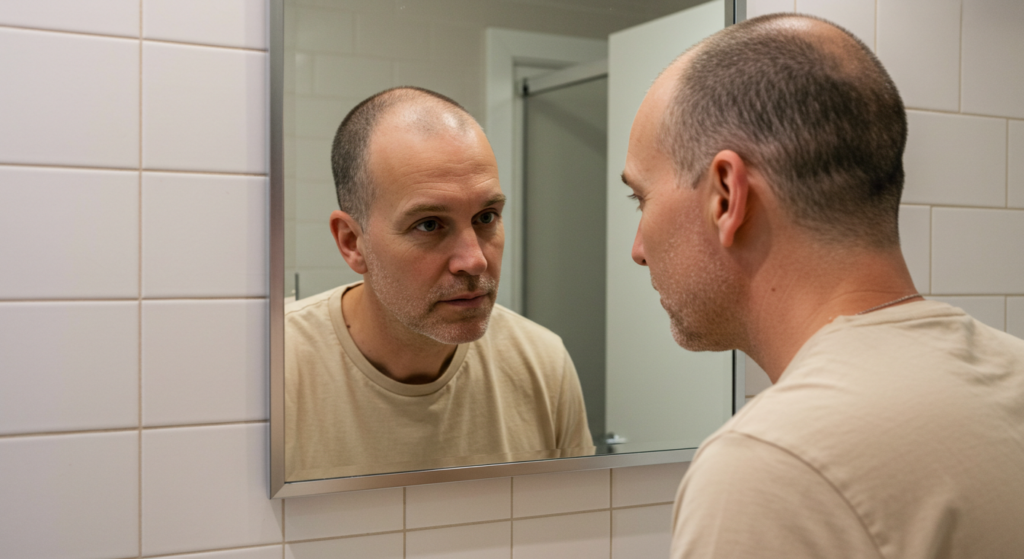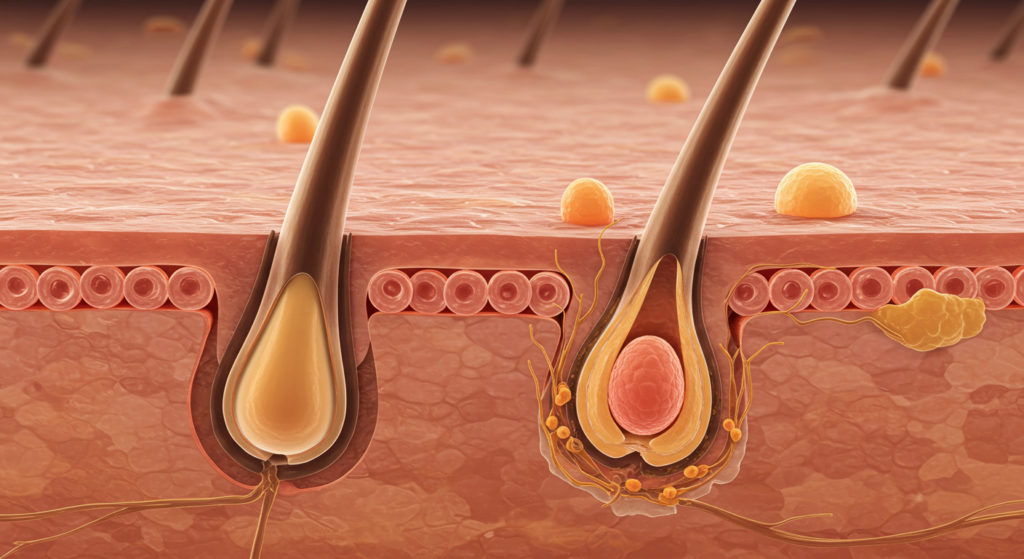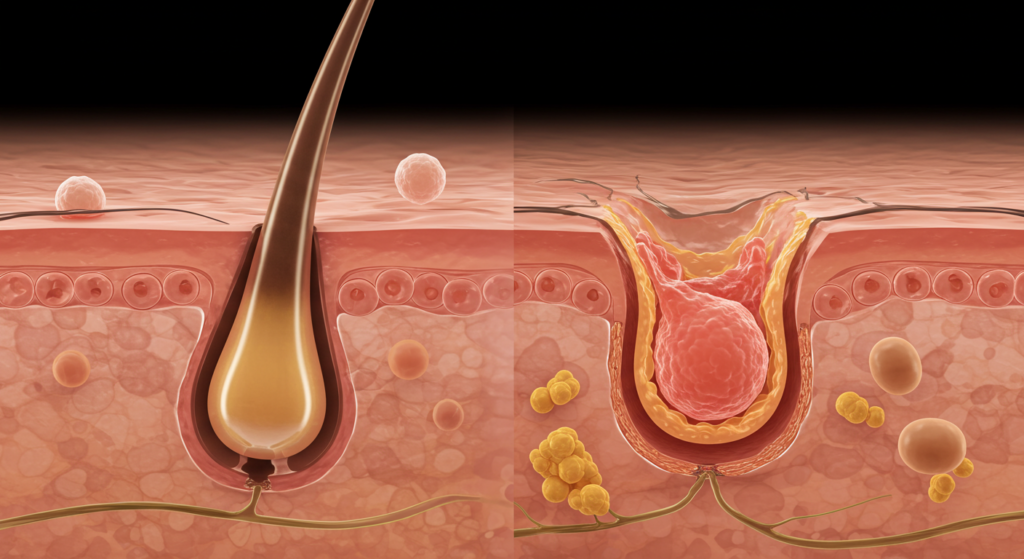La caída del cabello, conocida médicamente como alopecia, es una afección prevalente que afecta a millones de personas en todo el mundo. Puede manifestarse de diversas formas, desde un ligero adelgazamiento hasta la calvicie total. Las causas subyacentes son diversas, y un tratamiento eficaz depende de un diagnóstico preciso y un enfoque personalizado. Este artículo ofrece una descripción general completa de los diferentes tipos de alopecia, los métodos de diagnóstico y las opciones de tratamiento disponibles.

Comprensión de la alopecia: una descripción general
La alopecia abarca un amplio espectro de afecciones relacionadas con la pérdida de cabello, que afectan tanto a hombres como a mujeres en diferentes edades y etapas de la vida. La gravedad y el patrón de la pérdida de cabello varían significativamente según la causa subyacente. Si bien algunas formas son temporales y reversibles, otras son crónicas y progresivas. Comprender los diferentes tipos de alopecia es crucial para un manejo y tratamiento eficaces. Muchas personas experimentan angustia psicológica asociada con la pérdida de cabello, lo que afecta su autoestima y confianza. Por lo tanto, abordar el impacto emocional, junto con los síntomas físicos, es esencial para una atención integral.
La experiencia de la alopecia puede ser profundamente personal y emocionalmente desafiante. La naturaleza visible de la pérdida de cabello a menudo provoca inseguridad, ansiedad y depresión. Los grupos de apoyo y la terapia pueden ser recursos invaluables para quienes enfrentan los aspectos emocionales de esta afección. La intervención temprana y un diagnóstico preciso son clave para minimizar el impacto psicológico a largo plazo y maximizar las probabilidades de éxito del tratamiento. La comunicación abierta con los profesionales de la salud es crucial para desarrollar un plan de tratamiento personalizado.
Más allá del impacto emocional, la alopecia también puede tener consecuencias sociales. Las personas pueden experimentar aislamiento social, dificultades para interactuar socialmente y percepciones negativas de los demás. Abordar estos desafíos sociales suele requerir un enfoque multifacético que incluye apoyo profesional, estrategias de autoaceptación y, posiblemente, ajustes en el estilo de vida. El objetivo es empoderar a las personas para que vivan una vida plena a pesar de la pérdida de cabello. Comprender las posibles implicaciones sociales de la alopecia es crucial para que los profesionales de la salud puedan ofrecer una atención integral y de apoyo.
Finalmente, la gravedad y el tipo de alopecia pueden variar considerablemente, y es importante recordar que no todas las caídas de cabello son iguales. Ciertas afecciones, como los trastornos autoinmunes, pueden asociarse con tipos específicos de alopecia, lo que resalta la importancia de una evaluación médica exhaustiva para determinar la causa subyacente. Este conocimiento permite el desarrollo de estrategias de tratamiento específicas que abordan la causa raíz de la caída del cabello, en lugar de solo el síntoma en sí. La investigación sobre las causas y los tratamientos de la alopecia continúa, lo que ofrece esperanza para mejores intervenciones en el futuro.

Tipos comunes de pérdida de cabello
La alopecia androgenética (AGA), comúnmente conocida como calvicie de patrón masculino o femenino, es el tipo de pérdida de cabello más frecuente. Es una afección hereditaria que se caracteriza por el adelgazamiento progresivo del cabello en el cuero cabelludo, generalmente siguiendo un patrón específico. En los hombres, suele manifestarse con entradas y adelgazamiento en la coronilla, mientras que en las mujeres, suele presentarse como un adelgazamiento difuso en el cuero cabelludo. La AGA está influenciada por factores genéticos y hormonales, en particular los andrógenos.
El efluvio telógeno es una forma temporal de pérdida de cabello provocada por diversos factores, como el estrés, enfermedades, cirugías, partos o deficiencias nutricionales. Se caracteriza por una caída difusa del cabello, que suele notarse varias semanas o meses después del evento desencadenante. Normalmente, el crecimiento del cabello se reanuda una vez que se aborda la causa subyacente. Esta afección suele ser autolimitada, es decir, se resuelve por sí sola sin tratamiento específico.
La alopecia areata es un trastorno autoinmune en el que el sistema inmunitario ataca los folículos pilosos, lo que provoca una pérdida de cabello irregular. Puede afectar el cuero cabelludo, la barba, las cejas y otras zonas del cuerpo. La gravedad varía, desde pequeñas áreas del tamaño de una moneda hasta la calvicie total (alopecia totalis) o la pérdida total del vello corporal (alopecia universalis). Se desconoce su causa, pero se sospecha que existe predisposición genética y factores ambientales.
Otros tipos menos comunes de alopecia incluyen la alopecia por tracción, causada por peinados ajustados que tiran del cabello; la alopecia cicatricial, resultante del daño a los folículos pilosos; y el efluvio anágeno, asociado con la quimioterapia u otras exposiciones tóxicas. Un diagnóstico adecuado es fundamental para determinar el tipo específico de alopecia y orientar las estrategias de tratamiento adecuadas. Cada tipo requiere un enfoque de manejo diferente.

Diagnosticar la causa raíz
Una historia clínica completa es el primer paso para diagnosticar la alopecia. Esto incluye preguntas sobre antecedentes familiares de pérdida de cabello, afecciones médicas previas, medicamentos, niveles de estrés, enfermedades recientes y hábitos alimenticios. Una exploración física del cuero cabelludo y el cabello es crucial para evaluar el patrón y la extensión de la pérdida de cabello, así como el estado del cuero cabelludo. Esta evaluación visual ayuda a diferenciar los distintos tipos de alopecia.
Según el cuadro clínico, podrían ser necesarias más investigaciones. Un análisis de sangre puede ayudar a descartar afecciones subyacentes, como anemia, trastornos tiroideos y desequilibrios hormonales, que pueden contribuir a la caída del cabello. En casos de sospecha de alopecia cicatricial o alopecia areata, se puede realizar una biopsia del cuero cabelludo para examinar los folículos pilosos y confirmar el diagnóstico. Este procedimiento consiste en tomar una pequeña muestra de tejido del cuero cabelludo para su examen microscópico.
Las técnicas de imagen, como el tricograma (análisis de muestras de cabello), pueden utilizarse para evaluar los ciclos de crecimiento del cabello e identificar anomalías. La tricoscopia, una técnica no invasiva que utiliza un dermatoscopio para visualizar el cuero cabelludo y los folículos pilosos con gran aumento, puede proporcionar información valiosa sobre el estado de los folículos pilosos y ayudar a diferenciar los diferentes tipos de pérdida de cabello. Estas pruebas ayudan a reducir las posibilidades y a obtener un diagnóstico más preciso.
Una vez realizada una evaluación integral, el médico puede establecer un diagnóstico y determinar la causa subyacente de la alopecia. Este diagnóstico preciso es fundamental para seleccionar la estrategia de tratamiento más eficaz. El proceso de diagnóstico puede implicar la colaboración con otros especialistas, como endocrinólogos o dermatopatólogos, según la complejidad del caso. Este enfoque multidisciplinario garantiza una evaluación holística e integral.
Estrategias de tratamiento eficaces
Las opciones de tratamiento para la alopecia varían considerablemente según la causa subyacente y el tipo de caída del cabello. En el caso de la alopecia androgenética, se suelen utilizar medicamentos como el minoxidil (de aplicación tópica) y la finasterida (medicamento oral para hombres) para frenar la caída del cabello y estimular su regeneración. Estos medicamentos son más eficaces cuando se inician en las primeras etapas de la enfermedad. Modificaciones en el estilo de vida, como una dieta equilibrada y técnicas de manejo del estrés, también pueden ser de apoyo.
En casos de efluvio telógeno, el tratamiento se centra en abordar la causa subyacente. Una vez identificado y controlado el desencadenante, el crecimiento del cabello suele reanudarse espontáneamente. Medidas de apoyo, como una dieta saludable y técnicas de reducción del estrés, pueden acelerar la recuperación. Generalmente no se requieren tratamientos específicos, ya que la afección suele ser autolimitante.
Para la alopecia areata, las opciones de tratamiento incluyen corticosteroides tópicos, inmunoterapia (como sensibilizadores tópicos o inyecciones) y, en algunos casos, corticosteroides sistémicos. La elección del tratamiento depende de la gravedad y la extensión de la caída del cabello. En casos graves, se pueden considerar otros medicamentos inmunosupresores. El objetivo es inducir el recrecimiento del cabello y prevenir una mayor caída.
Otras modalidades de tratamiento para diversos tipos de alopecia incluyen la terapia con plasma rico en plaquetas (PRP), que consiste en inyectar plaquetas concentradas en el cuero cabelludo para estimular el crecimiento del cabello; la terapia láser de baja intensidad (LLLT), que utiliza láseres de baja intensidad para promover la actividad de los folículos pilosos; y la cirugía de trasplante capilar, que consiste en trasladar los folículos pilosos de una zona del cuero cabelludo a otra. La elección del tratamiento más adecuado depende del tipo específico de alopecia, su gravedad, las preferencias y el estado de salud general de cada persona.
La alopecia es una afección compleja con diversas causas y manifestaciones. Un diagnóstico preciso es fundamental para un tratamiento eficaz. Un enfoque multidisciplinario, que incluye una historia clínica completa, una exploración física y, posiblemente, estudios adicionales, es esencial para identificar la causa subyacente de la caída del cabello. Existe una amplia gama de opciones de tratamiento, adaptadas al tipo y la gravedad de la alopecia. La intervención temprana y el seguimiento del plan de tratamiento recomendado mejoran significativamente las probabilidades de éxito en el crecimiento del cabello y el control de la afección. Recuerde consultar con un profesional de la salud para obtener asesoramiento y orientación personalizados.
Descubra la experiencia de la Dra. Ebru Okyay, su médico de confianza. dermatólogo en AntalyaYa sea que esté buscando abordar problemas médicos de la piel o mejorar su belleza natural con tratamientos cosméticos, el Dr. Okyay está aquí para ayudarlo. Con atención personalizada y técnicas avanzadas, lograr sus objetivos para la piel nunca ha sido tan fácil.
